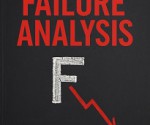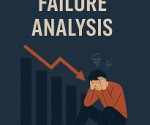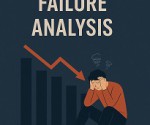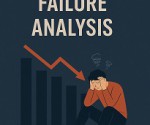UPSC Mains Exam Papers 2016
UPSC Mains Exam Papers 2016
UPSC MAIN EXAM 2016
GENERAL STUDIES PAPER I
- Early Buddhist Stupa-art, while depicting folk motifs and narratives, successfully expoundsBuddhist ideals. Elucidate.
- Krishnadeva Raya, the king of Vijayanagar, was not only an accomplished scholar himself but was a also a great patron of learning and literature. Discuss.
- Explain how the upraising of 1857 constitutes an important watershed in the evolution of British policies towards colonial India.
- Discuss the role of women in the freedom struggle especially during the Gandhian phase.
- Highlight the differences in the approach of Subhash Chandra Bose and Mahatma Gandhi in the struggle for freedom.
- Has the formation of linguistic states strengthened the cause of Indian unity?
- The anti-colonial struggles in West Africa were led by the new elite of Western -educated Africans. Examine.
- To what extent globalisation has influenced the core of cultural diversity in India? Explain.
- “An essential condition to eradicate poverty is to liberate the poor from the process of deprivation.” Substantiate this statement with suitable examples.
10. Why are the tribals in India referred to as ‘the Scheduled Tribes’? Indicate the major provisions enshrined in the Constitution of India for their upliftment.
11. With a brief background of quality of urban life in India, introduce the objectives and strategy of the ‘Smart City Programme.”
12. What is the basis of regionalism? Is it that unequal distribution of benefits of development on regional basis eventually promotes regionalism? Substantiate your answer.
13. Discuss the concept of air mass and explain its role in macro-climatic changes.
14. “The Himalayas are highly prone to landslides.”Discuss the causes and suggest suitable measures of mitigation.
15. The effective management of land and water resources will drastically reduce the human miseries. Explain.
16. South China Sea has assumed great geopolitical significance in the present context. Comment.
17. Major cities of India are becoming vulnerable to flood conditions. Discuss.
18. Present an account of the Indus Water Treaty and examine its ecological, economic and political implications in the context of changing bilateral relations
19. Enumerate the problems and prospects of inland water transport in India.
20. In what way micro-watershed development projects help in water conservation in drought-prone and semi-arid regions of India?
UPSC MAIN EXAM 2016
GENERAL STUDIES PAPER II
- Discuss the essentials of the 69th Constitutional Amendment Act and anomalies, if any, that have led to recent reported conflicts between the elected representatives and the institution of the Lieutenant Governor in the administration of Delhi. Do you think that this will give rise to a new trend in the functioning of the Indian federal politics?
- To what extent is Article 370 of the Indian Constitution, bearing marginal note “temporary provision with respect to the State of Jammu and Kashmir”, temporary? Discuss the future prospects of this provision in the context of Indian polity.
- “The Indian party system is passing through a phase of transition which looks to be full of contradictions and paradoxes.” Discuss.
- Exercise of CAG’s powers in relation to the accounts of the Union and the States is derived from Article 149 of the Indian Constitution. Discuss whether audit of the Government’s policy implementation could amount to overstepping its own (CAG) jurisdiction.
- Discuss each adjective attached to the word ‘Republic’ in the ‘Preamble’. Are they defendable in the present circumstances?
- What was held in the Coelho case? In this context, can you say that judicial review is of key importance amongst the basic features of the Constitution?
- Did the Government of India Act, 1935 lay down a federal constitution? Discuss.
- What is quasi judicial body? Explain with the help of concrete examples.
- Professor Amartya Sen has advocated important reforms in the realms of primary education and primary health care. What are your suggestions to improve their status and performance?
10. “In the Indian governance system, the role of non-state actors has been only marginal.” Critically examine this statement.
11. “Effectiveness of the government system at various levels and people’s participation in the governance system are inter-dependent/” Discuss their relationship in the context of India.
12. In the integrity index of Transparency International, India stands very low. Discuss briefly the legal, political, social and cultural factors that have caused the decline of public morality in India.
13. Has the Indian governmental system responded adequately to the demands of Liberalization, Privatization and Globalization started in 1991? What can the government do to be responsive to this important change?
14. “Traditional bureaucratic structure and culture have hampered the process of socio-economic development in India.” Comment.
15. Examine the main provisions of the National Child Policy and throw light on the status of its implementation.
16. “Demographic Dividend in India will remain only theoretical unless our manpower becomes more educated, aware, skilled and creative.” What measures have been taken by the government to enhance the capacity of our population to be more productive and employable?
17. “The broader aims and objectives of WTO are to manage and promote international trade in the era of globalization. But the Doha round of negotiations seem doomed due to differences between the developed and the developing countries.” Discuss in the Indian perspective.
18. Evaluate the economic and strategic dimensions of India’s Look East Policy in the context of the post Cold War international scenario.
19. “Increasing cross-border terrorist attacks in India and growing interference in the internal affairs of member-states by Pakistan are not conducive for the future of SAARC (South Asian Association for Regional Cooperation).” Explain with suitable examples.
20. What are the aims and objectives of the McBride Commission of the UNESCO? What is India’s position on these?
UPSC MAIN EXAM 2016
GENERAL STUDIES PAPER III
- How globalization has led to the reduction of employment in the formal sector of the Indian economy? Is increased informalization detrimental to the development of the country?
- Women empowerment in India needs gender budgeting. What are the requirements and status of gender budgeting in the Indian context?
- Pradhan Mantri Jan Dhan Yojana (PMJDY) is necessary for bringing unbanked to the institutional finance fold. Do you agree with this for financial inclusion of the poor section of the Indian society? Give arguments to justify your opinion.
- What are ‘Smart Cities’? Examine their relevance for urban development in India. Will it increase rural-urban differences? Give arguments for ’Smart Villages’ in the light of PURA and RURBAN Mission.
- Justify the need for FDI for the development of the Indian economy. Why there is gap between MOUs signed and actual FDIs? Suggest remedial steps to be taken for increasing actual FDIs in India.
- Comment on the challenges for inclusive growth which include careless and useless manpower in the Indian context. Suggest measures to be taken for facing hese challenges.
- What is water-use efficiency? Describe the role of micro-irrigation in increasing the water-use efficiency.
- What is allelopathy? Discuss its role in major cropping systems of irrigated agriculture.
- Discuss the role of land reforms in agricultural development. Identify the factors that were responsible for the success of land reforms in India.
10. Given the vulnerability of Indian agriculture to vagaries of nature, discuss the need for crop insurance and bring out the salient features of the Pradhan Mantri Fasal Bima Yojana (PMFBY).
11. Give an account of the current status and the targets to be achieved pertaining to renewable energy sources in the country. Discuss in brief the importance of National Programme on Light Emitting Diodes (LEDs).
12. Discuss India’s achievements in the field of Space Science and Technology. How the application of this technology has helped India in its socio-economic development?
13. Why is nanotechnology one of the key technologies of the 21st century? Describe the salient features of Indian Government’s Mission on Nanoscience and Technology and the scope of its application in the development process of the country.
14. Rehabilitation of human settlements is one of the important environmental impacts which always attracts controversy while planning major projects. Discuss the measures suggested for mitigation of this impact while proposing major developmental projects.
15. The frequency of urban floods due to high intensity rainfall is increasing over the years. Discussing the reasons for urban floods, highlight the mechanisms for preparedness to reduce the risk during such events.
16. With reference to National Disaster Management Authority (NDMA) guidelines, discuss the measures to be adopted to mitigate the impact of recent incidents of cloudbursts in many places of Uttarakhand.
17. The terms ‘Hot Pursuit’ and ‘Surgical Strikes’ are often used in connection with armed action against terrorist attacks. Discuss the strategic impact of such actions.
18. ‘Terrorism is emerging as a competitive industry over the last few decades.” Analyse the above statement.
19. Border management is a complex task due to difficult terrain and hostile relations with some countries. Elucidate the challenges and strategies for effective border management.
20. Use of internet and social media by non-state actors for subversive activities is a major security concern. How have these been misused in the recent past? Suggest effective guidelines to curb the above threat.
KUSHMANDA DISTANCE LEARNING PROGRAM FOR IAS(UPSC) Preliminary Exam 2017
Notification:FEB,2017
Exam Date:18june, 2017
GS PAPER I
WHAT YOU WILL GET:
- COMPLETE STUDY MATERIAL
- 30 TEST PAERS (MOST EXPECTED QUESTIONS)
- Expert Support ( through email kushmandaeducation@gmail.com)
- English/Hindi Medium
Fee:Rs 6000/-
PAPER II CSAT
WHAT YOU WILL GET:
- COMPLETE STUDY MATERIAL
- 30 TEST PAERS (MOST EXPECTED QUESTIONS)
- Expert Support ( through email kushmandaeducation@gmail.com)
- English/Hindi Medium
FEE Rs 3500/-
“Over 80-100% questions come directly/indirectly from Kushmanda Study Material .”
KUSHMANDA IAS HCS ACADEMY
(KUSHMANDA EDUCATION SERVICES PVT LTD)
CORPORATE BRANCH:
OPP I.B. COLLEGE,GT ROAD
PANIPAT
MAIN BRANCH:
C-100, TDI CITY,
PANIPAT
HARYANA
Helpline: 08607570992, 09728926678
“Making good decisions is a crucial skill at every level.” So join us
immediately.
FINAL SELECTION :
1)SEEMA SAINI(KURUKSHETRA)
2)WAKIL AHMAD(MEWAT)
3)ABHISHEK BATRA(KAITHAL)
4) VIRENDER BANSAL (AMBALA)
5) POOJA GOYAT( JIND)
6) PANKAJ DHANDA(HISAR)
7) JYOTI CHAHAL (ROHTAK)
8) MANAV MALIK (BAHADURGARH)etc
ABOVE 500 CANDIDATES (Distance Learning) QUALIFIED in IAS Prelim 2016.
Making good decisions is a crucial skill at every level. So join us immediately. You should not waste this opportunity for just a sake of only appearing the examination. Give this attempt with the full fire.
Kushmanda HCS/IAS Academy lays great emphasis on Most Expected and Probable Questions. Trust*,Faith**,Hope***, and Individual attention**** are our hallmark.
*Example of the feeling of a one year old baby. When you throw him in the air, he laughs because he knows you will catch him ( THAT IS TRUST ).
**Once, all villagers decided to pray for RAIN, on the day of prayer all people gathered and only one boy came with an umbrella (THAT IS FAITH ).
***Every night we go to bed without any of assurance of being alive the next morning but still we set the alarms in our watch to wake up (THAT IS HOPE ).
Individual attention**** Only 15-20 students per class.
HELPLINE: 8607570992, 9728926678
“Exams are fast approaching. Work Smart: You have limited time and energy.”
On demand of students (Haryana/Punjab/Himachal Pradesh) ,We are looking for /Business Partners at different locations in Haryana/Punjab/Delhi/Himachal Pradesh to impart quality training to students.For More Details call us
HELPLINE:8607570992,9728926678
















